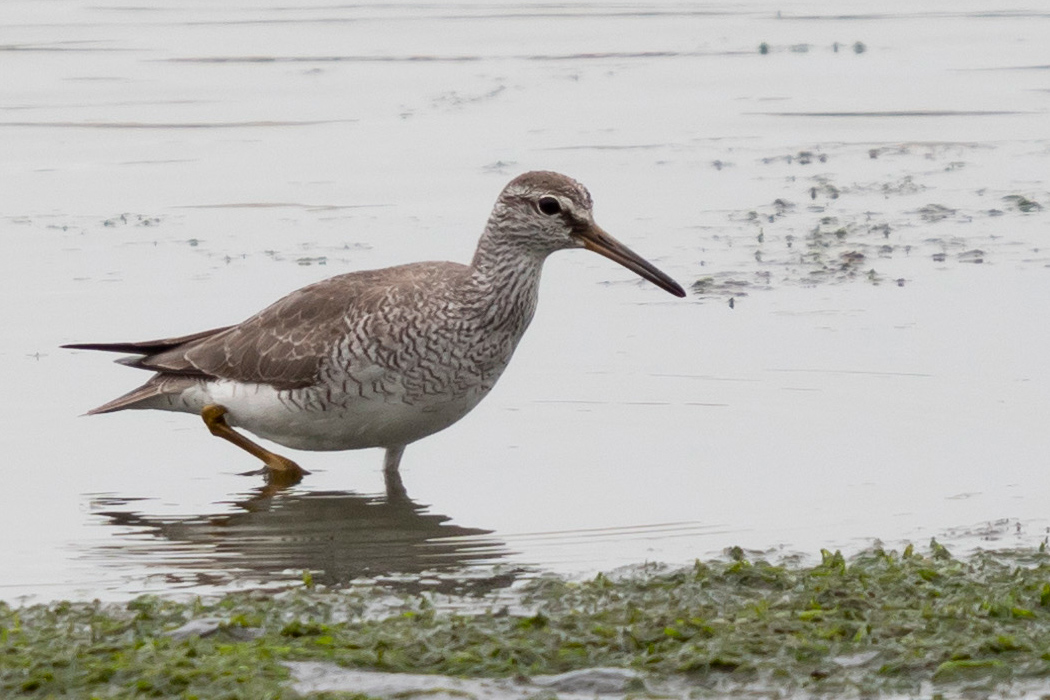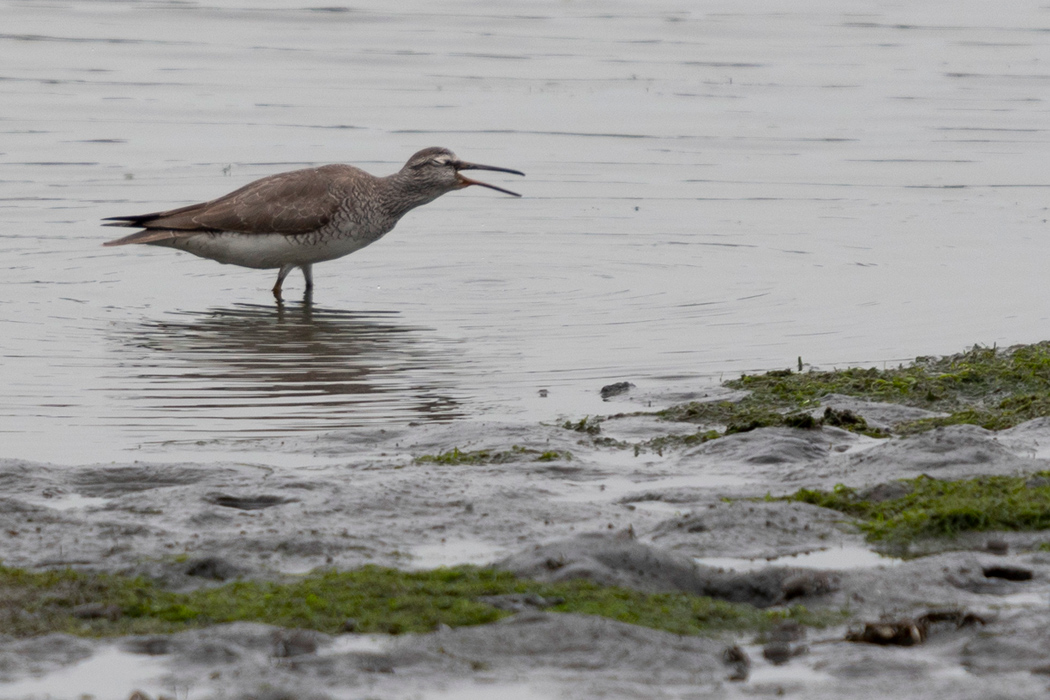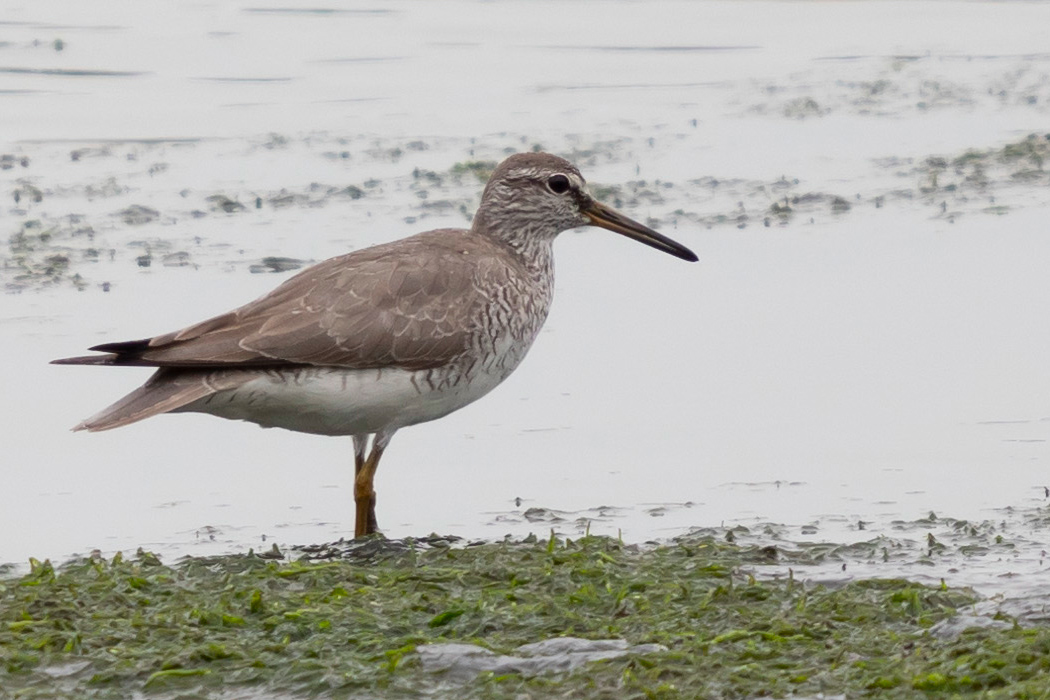
Grey-tailed Tattler
Catch crabs on the shore.
| Scientific name | Heteroscelus brevipes |
| English name | Grey-tailed Tattler |
| Japanese name | 黄脚鷸 |
| Classification | Aves |
| Classification details | Charadriiformes Scolopacidae |
| Full length | 25cm |
| Distribution | Fly to various parts of Japan as a migratory bird |
Characteristics
A sandpiper with yellow legs comes to the tidal flat. The dorsum of the body is brownish gray, with vertical stripes on the neck and striated stripes on the belly. The legs are short and yellow. There is a white eye ring around the eye, and the eye line is slightly dark brown. It cries with a voice of "Pewy pewy".
Differences from the Common Redshank
On the Pacific side, the red-bellied sandpiper, which is very similar to the red-shanked sandpiper, also comes flying. It is not easy to distinguish between the two species, but the Snipe's belly is more striated and the tail feathers are darker.
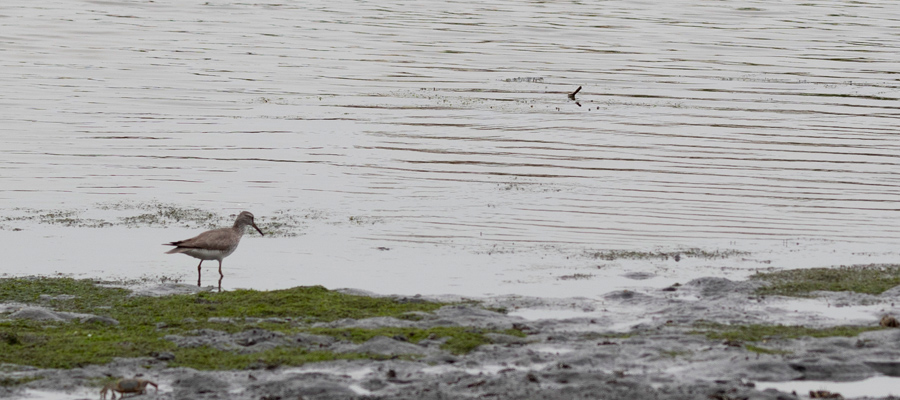
Ecology
They come to tidal flats and estuaries. When there are many, they move in flocks of about 100 birds and catch and eat insects and crustaceans on shallow shores. When resting, it climbs to slightly higher places such as rocks or tetrapods. They breed in Siberia and the Kamchatka Peninsula, and migrate south in winter. They come to Japan in spring and autumn.
Habitat
Found alone in the tidal flats of Tokyo Port Wild Bird Park. It walked along the shore, caught crabs, and occasionally squealed loudly. I had little experience in identifying sandpipers, and I couldn't tell the species well when their legs were in the water. After a while, he walked away.
Pictures
Introducing a picture of Grey-tailed Tattler.

Picture book
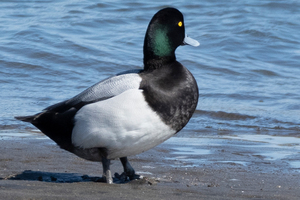
Greater Scaup
Black mixed with green sheen.......ead more.

Sheep
It has a wide peripheral vision and runs away when it senses danger.......ead more.
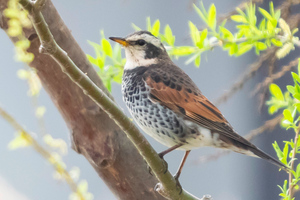
Natumann's Thrush
Walks or stops on the ground.......ead more.
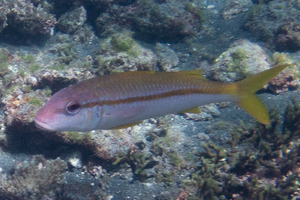
Yellowfin goatfishお
Yellow stripes run along it.......ead more.

Asian House Martin
White hair on legs is cute.......ead more.


